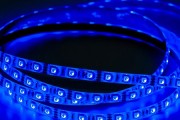 2017-10-13
2017-10-13
The introduction of solid-state lighting using light-emitting diode (LED) technology has ignited widespread interest in the ways that lighting can offer benefits to people, including improved visibility at night, enhanced perceptions of brightness and security, and spectral tuning for management of circadian rhythms. Yet, as illustrated in a recent report from the American Medical Association (AMA), the increasing popularity of LED lighting is also raising new questions and reviving older concerns about unwanted impacts of these light sources, such as light pollution, discomfort glare, circadian disruption, and retinal damage via a mechanism known as blue-light hazard.
Continue reading →
 2017-10-13
2017-10-13